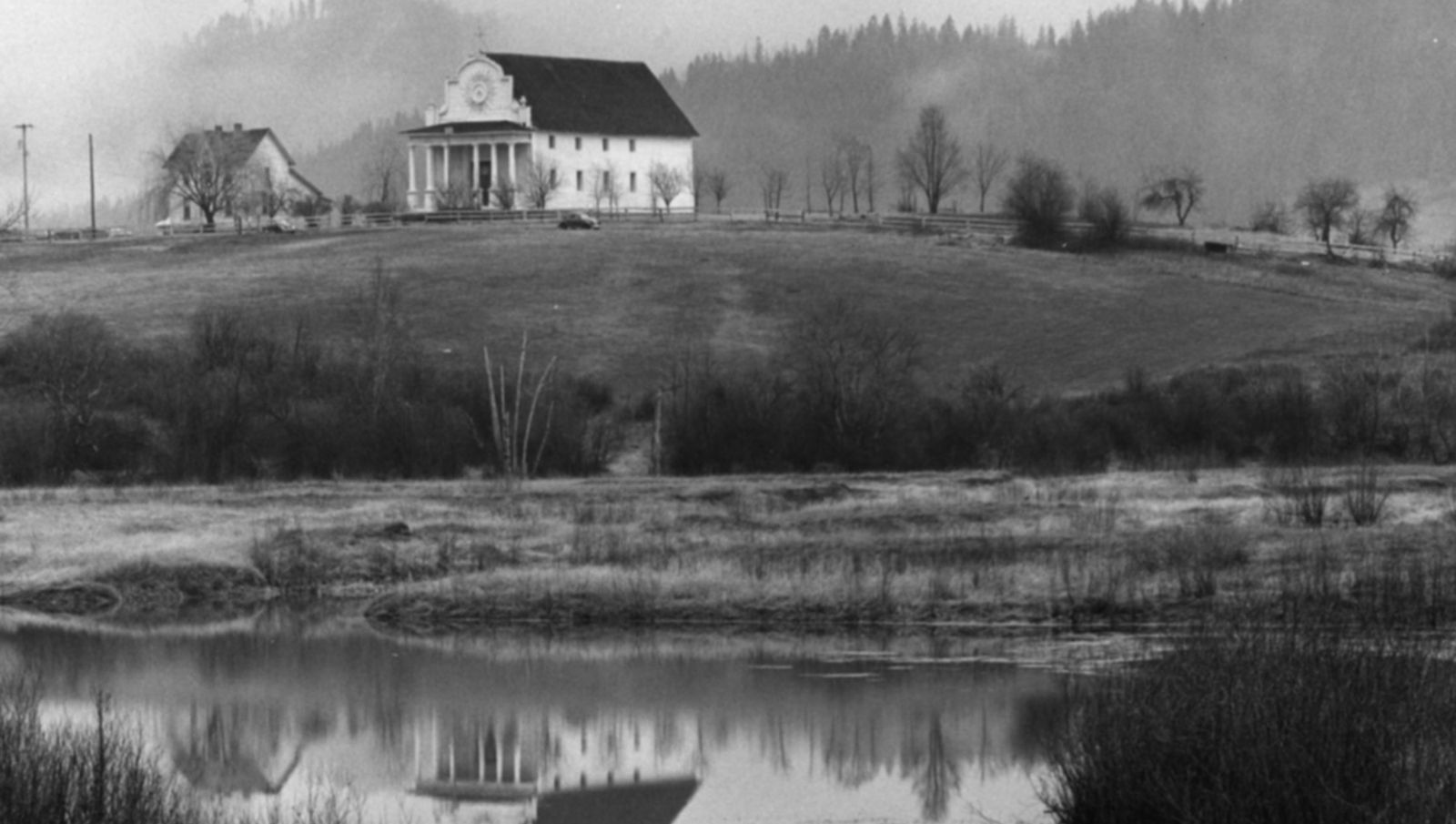
Cataldo Mission
Construction began in 1850 by the Coeur d'Alene River 35 miles north. Fr. Antonio Ravalli and the Coeur d'Alene people cut and erected logs, then laced them with saplings and tied with grasses and daubed with mud, recreating the grandeur of a European cathedral in the Idaho wilderness.
Section:Then & Now
Image One
Photo Archive
| The Spokesman-Review
Image Two
Kathy Plonka
| The Spokesman-Review
In the early 19th century, the natives who lived in villages along the St. Joe River, Coeur d'Alene Lake and the Spokane River heard stories from passing travelers that black-robed strangers with special powers were living with other bands of Indians to the east. This prompted the Schee chu'umsch, as the Coeur d'Alene people call themselves, to summon these men to dwell among them, too. Father Pierre-Jean De Smet came first, in 1842, followed by other missionary priests who built the Mission of St. Joseph on the St. Joe River. Confounded by seasonal flooding , they made plans for a new mission. Construction began in 1850 by the Coeur d'Alene River 35 miles north. Fr. Antonio Ravalli and the Coeur d'Alene people cut and erected logs, then laced them with saplings and tied with grasses and daubed with mud, recreating the grandeur of a European cathedral in the Idaho wilderness. Woodwork was dyed with crushed huckleberries. Wallpaper was made of pieces of fabric and old newspapers. Candle holders were made from tin cans. Local wood was whittled into statues. The Mission of the Sacred Heart, now the oldest building in Idaho and a state park, became an important stop for traders, miners, settlers, and worshippers. The Coeur d'Alenes return each August for the Feast of the Assumption.
Share on Social Media
